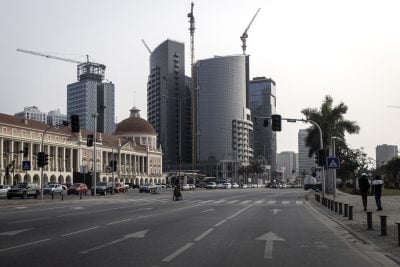South African vintners are busy in China. In March, South African wines appeared at the “Great Wines of Southern Hemisphere 2017” trade show, which took place in the southern city of Chengdu just before China’s largest annual food and wine fair.
This month they will be participating in a series of promotions culminating in the “Discover South Africa” tasting event in Shanghai on 27 April. According to Michaela Stander, market manager for Asia at Wines of South Africa (WOSA), this will include about 20 exhibitors showcasing over 200 wines. And that’s not all.
In May, Shanghai will host SIAL China, one of the largest food exhibitions in Asia, where South African wines will woo visitors at the country’s pavilion. In October, WOSA, a non-profit established to promote South African wines in major export markets, will lead a three-city road show on the Chinese mainland and in November South African wines will once again sparkle in ProWine China, a major wine and spirit industry fair hosted annually in Shanghai. The signs are clear.
While the top five export destinations for packaged South African wine exports are still in the West – the UK, Germany, Netherlands, Sweden, and the USA – China is becoming increasingly important as an export destination.
“China is currently South Africa’s sixth largest export market for packaged wines by volume, and the largest in the Asian region, accounting for around 9.46m litres [in 2016],” says Stander. This represents 5.44% of South Africa’s total packaged exports.
If bulk exports are taken into account, then total exports to China in 2016 jumped to 15.76m litres. This means that while South Africa’s total exports (packaged and bulk wine) worldwide increased by 9.8%, worth R9bn ($688.1m), total exports to China increased by 39%, valued at R554m ($42.4m).
Stander says South African wines grew exponentially in China from 2013 to 2015: “Many in the trade cited China as the surprise of the year in 2015 as we took up seventh position in terms of origin for imported wine. Some expected [the exports] to decline somewhat in 2016, but instead we remained steady and are now in a position to overtake the United States for sixth spot.”
Joint ventures
Hein Koegelenberg is perfectly poised to capitalise on the growing China market. CEO of La Motte, a family wine estate nearing its fifth decade, and its sister vineyard Leopard’s Leap, both located in the picturesque Franschhoek Valley in Western Cape province, Koegelenberg is also chairman of Perfect Wines of South Africa, a joint venture with Chinese company Perfect China.
In 2013, the partnership bought the Val de Vie estate in the Western Cape, marking the first major Chinese investment in South Africa’s wine industry. “The Chinese wine market is very important to our industry, and this first Chinese investment … is a clear indication of their interest in our wines and can lead the way to a bright future for the export of South African wine to the East,” Koegelenberg said in a press statement.
The joint venture not only exports South African wine to China but also to the Far East – Malaysia, Thailand, Singapore and Vietnam – creating a mutually beneficial synergy between South African wine and Chinese investment. Mareli Roux, senior PR at La Motte, says China is among the top five of the 40 countries La Motte and its sister vineyards export to.
In 2016, of the 10m bottles produced, over 3m were exported to China. Roux says there are challenges, such as the language and culture barriers and lack of a strong distribution network, but there are considerable opportunities too.
“China is set to become the second largest wine-consuming country after the USA by 2020,” she says. “We need to explore this opportunity. Although retail, direct sales and on-trade [remain] strong, online is the new platform and an exciting opportunity. China will lead the way for the world when it comes to online sales.”
La Motte is going in for localisation, like modifying the wine to suit the Chinese palate and preference. “We already print our back labels in Chinese,” Roux points out.
In 2015, there was more Chinese investment, with William Wu, a Chinese immigrant running an electronics business in South Africa, buying a 51% stake in a winery near Cape Town.
“My decision to invest in Swartland Winery was driven by the fact that I am coming with a market for the product,” Wu said in a statement. “The market is in China, where I have a ready demand for the quality and volume of wine Swartland produces … Swartland [is a] great investment [as] it is one of the few South African wineries of this size where the majority of grapes planted are red varieties – in which the Chinese market is most interested.”
Stellenbosch Vineyards, a leading winemaker and exporter based in the Western Cape, has been exporting to China since 2005. While the UK, Netherlands and Denmark are the top three markets among the 38 countries it exports to, in 2016 around 80,000 bottles were sold in China.
Though this was a fraction of the around 8m bottles sold worldwide that year, bringing a revenue of $13m, the vineyard senses potential in the China market. Guy Kedian, sales manager at Stellenbosch, says the vineyard took part in a road show in China last year to introduce its wines to local wholesalers and retailers who have shown interest in buying from its agents.
Stellenbosch is excited by the opportunities, especially the size of the market and its purchasing power. “It’s a relatively untapped market with a large number of potential consumers,” Kedian says. “Also, the consumer behaviour is different, more focused on authenticity and quality than on price alone.”
France dominates the China market (40%) and South Africa accounts for only around 2%, but with wine sales in the world’s most populated country estimated to grow by 25% from 2014 to 2018, South Africa is making an integrated effort to expand there. This involves various agencies – WOSA, the Department of Trade and Industry, South African Tourism and the government of Western Cape – working together to create a unified Brand South Africa experience.
Wine tourism
Wine tourism is an important part of this. In 2016, South Africa recorded more than 10m international visitors.
The Ministry of Tourism says China is the leading growth market, with a 38% year-on-year growth. To cater to this market, vineyard areas are sporting signboards in Chinese while South African tourism operators are learning Chinese and sending staff to China to familiarise themselves with the culture.
Sudeshna Sarkar
Want to continue reading? Subscribe today.
You've read all your free articles for this month! Subscribe now to enjoy full access to our content.
Digital Monthly
£8.00 / month
Receive full unlimited access to our articles, opinions, podcasts and more.
Digital Yearly
£70.00 / year
Our best value offer - save £26 and gain access to all of our digital content for an entire year!
 Sign in with Google
Sign in with Google 


